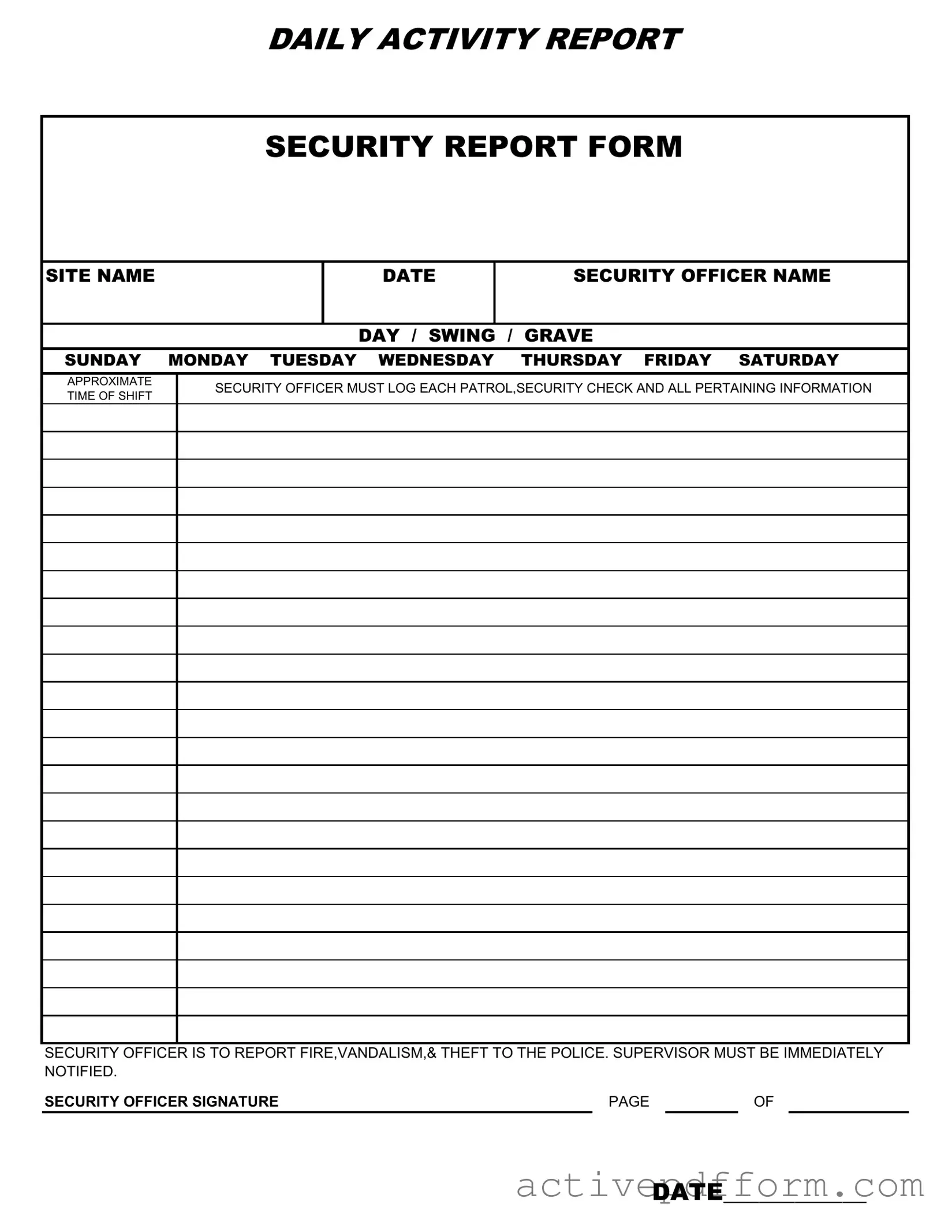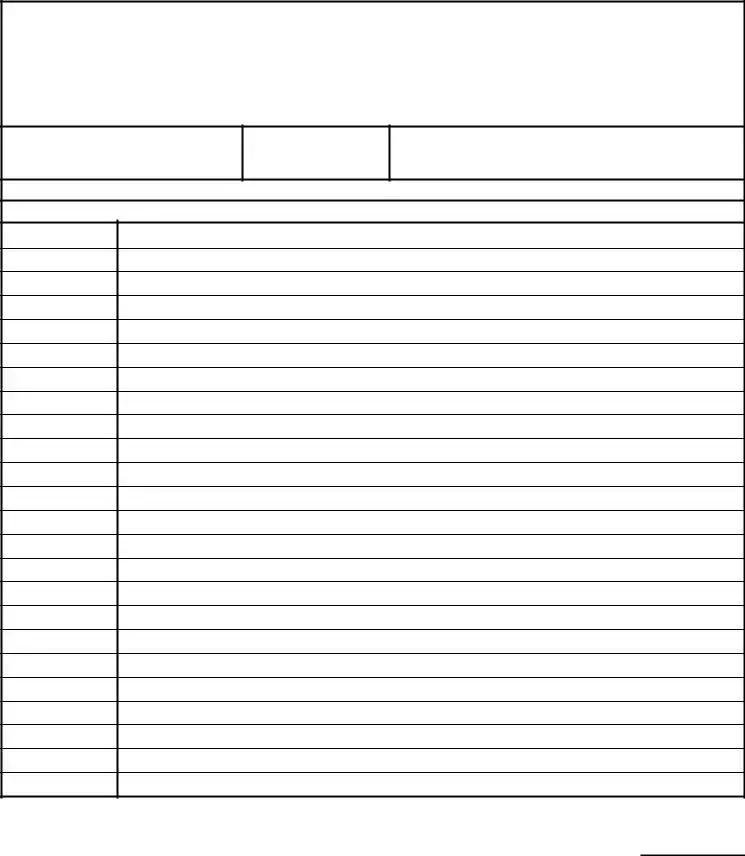What is the purpose of the Security Guard Daily Report Sample form?
The Security Guard Daily Report Sample form is designed to document the daily activities of security personnel. It serves as a record of patrols, security checks, and any incidents that occur during a shift. This documentation helps maintain accountability and ensures that all necessary information is reported accurately.
What information is required on the form?
The form requires several key pieces of information. This includes the site name, date, security officer's name, and the shift type (day, swing, or grave). Additionally, the officer must log each patrol and security check, along with any incidents such as fire, vandalism, or theft. The officer's signature is also needed to validate the report.
How should incidents like fire, vandalism, or theft be reported?
In the event of incidents such as fire, vandalism, or theft, the security officer must report these to the police immediately. Furthermore, the officer should notify their supervisor without delay. This ensures that appropriate action can be taken and that the incident is documented properly in the report.
What is the significance of logging patrols and security checks?
Logging patrols and security checks is crucial for several reasons. It provides a clear record of the officer's activities during their shift, which can be vital for investigations or audits. This documentation also helps identify patterns or areas that may require increased security measures. Consistent logging fosters accountability among security personnel.
What should a security officer do if they encounter a problem during their shift?
If a security officer encounters a problem during their shift, they should address the issue according to the established protocols. This may include notifying law enforcement, contacting a supervisor, or taking immediate action to resolve the situation. Documenting the incident in the daily report is also essential for future reference.
How often should the Security Guard Daily Report be completed?
The Security Guard Daily Report should be completed at the end of each shift. This ensures that all activities and incidents are recorded while they are still fresh in the officer's mind. Completing the report promptly helps maintain accurate records and supports effective communication within the security team.
Can the form be modified to fit specific site needs?
Yes, the Security Guard Daily Report Sample form can be modified to better fit the specific needs of a site. While the core elements should remain intact to ensure consistency and compliance, additional fields can be added to capture site-specific information or requirements. This customization can enhance the effectiveness of the reporting process.

